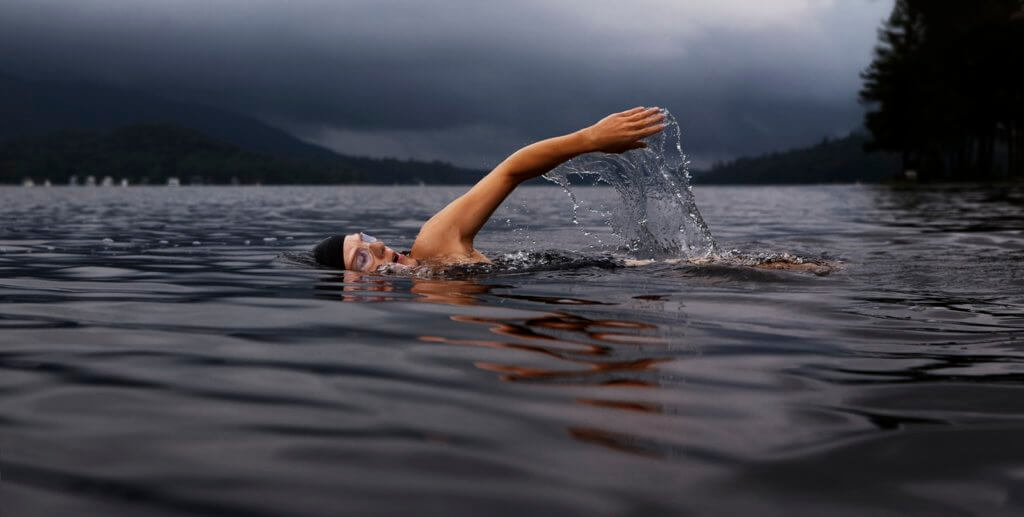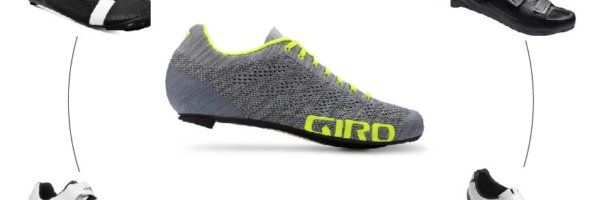As athletes, we can spot someone who has chaffed from a mile away — the stiff posture, wide stance, half-waddle that accompanies someone who has clearly fallen victim to the irritating, painful sores that come from chaffing. Endurance athletes are used to pushing through pain, but, sometimes, the burning pain of chafing can ruin the joy of participating in sport.
Endurance athletes are well acquainted with the pain of chafing. Chafe is that horrible soreness that comes when something has consistently rubbed against your skin for an extended period of time (i.e. your inner thighs rubbing together on a run or rubbing against the seat of your bike, your sports bra band cutting in just below your breasts, or your swimsuit cutting your arms or armpits as you swim the backstroke). It can range anywhere from slightly irritating to extremely painful — sometimes even causing bleeding.
Athletes can experience some of the worst chafing imaginable. The body mechanics required for swimming allot for intense, repetitive rubbing of skin against a bathing suit. And, the water itself makes the friction against the skin worse. Hop on a bike, and the repetition of pedal strokes can lead your inner thighs and crotch to rub up against the seat. Set out for a run and you might experience some of the worst chafing in between the thighs, on the chest, and under the arms.
The pain from chafing can also make athletes change their form to try to inhibit the pain. This can cause many problems for the athlete, because correct form and body mechanics go out the window while trying to avoid the pain of chafing — and poor form can contribute to injury. You can only ignore this pain for so long before it becomes unbearable, so, here are some ways that you can prevent and treat chafing.

Prevention
Swim:
- Lubricant is your best friend. Take a look at your suit and assess where the seams dig in to your skin the most. Apply the lubricant (Vaseline, petroleum jelly, lanolin, TriSlide, Body Glide, Aquaphor) under the seams, on to your skin.
- Pay attention to your stroke mechanics. For example, if you notice that when you take a breath, you catch your chin on your shoulder slightly, apply lubricant to your shoulder and chin to prevent skin-on-skin rubbing.
- Remember that the saline in salt water irritates the skin more, causing more chafe to happen while swimming in salt water. Account for this, and maybe apply more lubricant than you would in a freshwater lake or a swimming pool.
Bike:
- Use a bike seat with less padding. Although a heavily padded seat can seem like the more comfortable choice, for long rides, the less padding, the better. When your weight settles on to a heavily padded seat, the padding can press into hard to reach parts of the body, which can cause chafing in nooks and crannies.
- Wear compression shorts that go at least to your mid-thigh.
- Apply lubricant to the inner thigh and crotch area.
- Many of the suggestions for running also heavily apply to the prevention of chafing while biking.
Run:
- Invest in longer compression shorts. These will prevent your inner thighs from rubbing against one another, and the fabric will not be loose enough to create friction between skin and material.
- Cover your nipples. Use bandaids or another form of small protection to prevent skin to shirt contact.
- Apply lubricant generously on chafe-prone areas. Also, bring something such as travel sized deodorant (as a form of lubricant) on your runs so that you can reapply on the move.
- Hydrate. Drinking water minimizes the salt content in your sweat, and salt has an extremely irritating effect on skin when exercising.
- Wear something other than cotton. Cotton absorbs sweat and does not dry easily, so, the wet clothing will irritate your skin more when rubbed against. Opt for synthetic fabrics that wick away moisture.
- Make sure your clothing is seamless and tag-less. Seams and tags on shirts can seriously irritate skin over time.
- Make sure that your clothing is a good fit. Too tight, and your clothes can dig into your skin. Too loose, and the excess material can rub your skin raw.
Treatment
- Shower as soon as you are done with the activity. Keep the water warm, not hot, and use antibacterial soap to prevent infections.
- Pat (do not rub) the affected areas with an ointment such as Sudocrem, Desitin, Cortizone, Aquaphor, or A+D Zinc Oxide cream.
- Air it out. When laying down, try to keep the affected areas open to the air.
By Bri Doherty
Check out our Hard as Nails podcast:
Like this? Check out these other articles:










